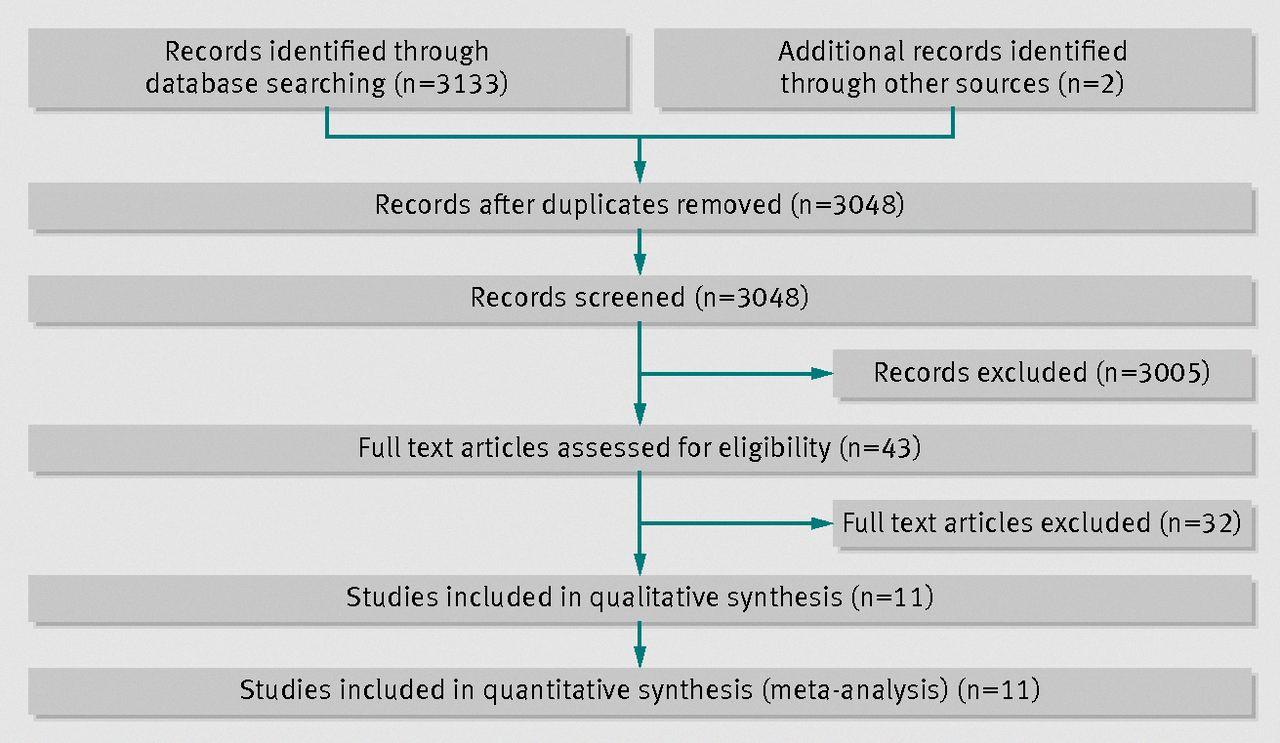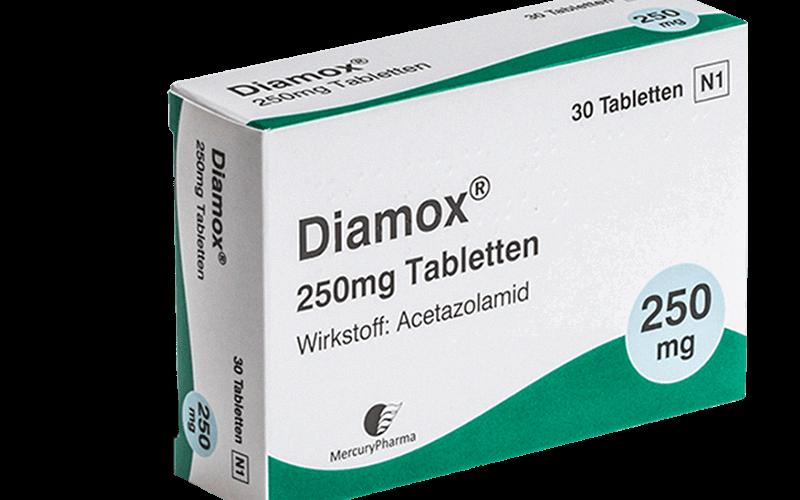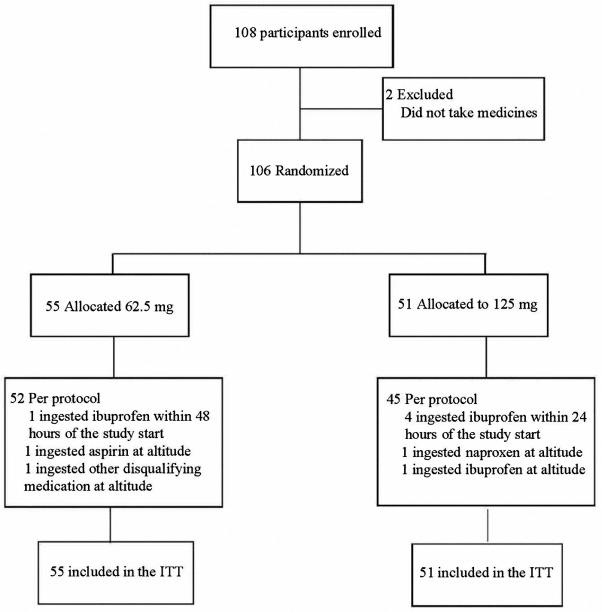If you’re planning a trip to high altitude locations, such as mountain climbing or trekking, you may be at risk of altitude sickness. Altitude sickness is a condition that can occur when you quickly ascend to high altitudes without enough time for your body to adjust to the change in atmospheric pressure and oxygen levels. Symptoms of altitude sickness include headache, nausea, fatigue, dizziness, and shortness of breath. It can even lead to life-threatening conditions such as high altitude pulmonary edema (HAPE) and high altitude cerebral edema (HACE).
Fortunately, there is a medication called Diamox that can help prevent and treat altitude sickness. Diamox, also known as acetazolamide, is a diuretic medication that can help your body adjust to the lack of oxygen at high altitudes by increasing your breathing rate and reducing fluid buildup in your body. It is particularly useful in situations when you cannot make a slow ascent.
Diamox is available in both immediate-release and extended-release forms. The immediate-release pills can work within 1 to 2 hours. Tingling or pins and needles feelings around the mouth and in the hands and feet is a common side effect of Diamox and suggests the medicine is working. Nearly eveyone who takes Diamox notices that carbonated beverages taste metallic.
Diamox has been shown to be effective in preventing altitude sickness in several studies. However, it is not recommended for everyone. You should not use Diamox if you have cirrhosis, severe liver or kidney disease, an electrolyte imbalance, adrenal gland failure, or an allergy to Diamox or sulfa drugs. It is important to consult with your doctor before taking Diamox to determine if it is safe for you.
While Diamox can be effective in preventing and treating altitude sickness, it is important to remember that it is not a substitute for proper acclimatization. The best way to prevent altitude sickness is to ascend slowly, giving your body time to adjust to the changes in altitude. It is also important to stay well hydrated, avoid alcohol and smoking, and eat a well-balanced diet.
Diamox can be a useful tool in preventing and treating altitude sickness, particularly in situations when a slow ascent is not possible. However, it is important to use it safely and under the guidance of a doctor. Remember that the best way to prevent altitude sickness is a slow ascent and proper acclimatization. Stay safe and enjoy your high-altitude adventures!
Altitude for Taking Diamox
Diamox is a medication that is commonly used to prevent and treat altitude sickness. It is generally recommended to take Diamox when you climb quickly to high altitudes, typically above 10,000 feet or 3,048 meters. At this altitude, the air pressure decreases, and the air becomes thinner, whih can lead to various symptoms of altitude sickness such as headache, nausea, dizziness, and fatigue. Therefore, taking Diamox before reaching this altitude can help prevent these symptoms and enable you to climb more comfortably. However, it is always best to consult with your healthcare provider before taking Diamox, as they can provide you with specific instructions on dosage and usage, based on your individual needs and medical history.
Source: pbfluids.com
The Immediate Effects of Taking Diamox
Acetazolamide, commonly known as Diamox, is a medication used to treat a variety of conditions such as altitude sickness, glaucoma, and epilepsy. When it cmes to its effectiveness, the answer to the question “Does Diamox work immediately?” depends on the dosage form of the medication being used.
The immediate-release form of Diamox, such as the oral tablets or capsules, may start to work within 1 to 2 hours after ingestion. This is because the medication is rapidly absorbed by the body and can quickly start to affect the acid-base balance of the blood, which is one of the mechanisms by which Diamox works.
However, it’s worth noting that the full therapeutic effect of Diamox may take several days to develop, especially for conditions such as glaucoma or epilepsy. In some cases, it may take up to a week or more for the medication to reach its maximum effectiveness. Therefore, it’s important to follow your healthcare provider’s instructions regarding dosing and timing of Diamox to ensure that you’re getting the most benefit from the medication.
The Effects of Taking Diamox
Diamox, also known as Acetazolamide, is a medication used to treat a variety of conditions such as altitude sickness, glaucoma, and epilepsy. When taking Diamox, you might experience a tingling or pins and needles sensation around your mouth, as well as in your hands and feet. This is a common side effect of the medication and is actually a sign that the medicine is working as it should.
Another common side effect of Diamox is the metallic taste in carbonated beverages. This may not be the most pleasant sensation, but it is not harmful and should subside once you stop taking the medication.
One of the more serios side effects of Diamox is the formation of renal stones. While this can be a painful condition, it is very treatable with medication and dietary changes. It is important to discuss any symptoms or concerns you have with your doctor if you are taking Diamox, as they can advise you on the best course of action. while there may be some uncomfortable side effects, Diamox is a safe and effective medication when used as directed by a healthcare professional.
Who Should Avoid Taking Diamox?
Diamox is a medication that is used to treat various medical conditions such as altitude sickness, glaucoma, and epilepsy. However, there are certin individuals who should not take Diamox. If you have cirrhosis, severe liver or kidney disease, or an electrolyte imbalance, it is not recommended to take Diamox. Additionally, if you have adrenal gland failure, you should avoid taking Diamox. It is also important to note that if you have an allergy to Diamox or sulfa drugs, you should not take this medication. It is important to speak with your healthcare provider before taking any medication to ensure that it is safe and appropriate for you.
Avoiding Certain Activities While Taking Diamox
While taking Diamox (acetazolamide), it is important to avoid activities that require you to be alert and focused, as this medication can impair your thinking and reactions. This includes driving or operating heavy machinery. Additionally, it is important to avoid exposure to sunlight or tanning beds while taking Diamox, as it can increase your risk of sunburn. If you need to be outside, be sure to wear protective clothing and use sunscreen. it is important to take precautions to ensure your safety when taking Diamox.
Source: bmj.com
How Much Water Should I Drink While Taking Diamox?
When taking Diamox, it is recommended to increase your water intake to help prevent altitude sickness. The general guideline is to drink at least 4 liters of water per day while trekking at high altitudes. However, it is important to listen to your body and drink more if you feel thirsty or dehydrated. It is also crucial to monitor your urine color, as dark yellow or amber urine can be a sign of dehydration. By staying hydrated, you can help your body adjust to the high altitude and reduce the risk of altitude sickness.
Taking Diamox Before a Trip: Should I?
If you are planning a trip to high altitude areas, it is recommended to take Diamox before your trip. Diamox is a medication that helps prevent and alleviate the symptoms of altitude sickness. It is important to note that Diamox is a prescription medication, so you should consult with your doctor before taking it.
To determine if you are prone to any side effects of Diamox, you should take it for two or three days seveal weeks before your trip. The usual dosage of Diamox is a 250mg tablet. It is recommended to take ½ after breakfast and ½ after your evening meal.
It is important to note that Diamox is not a substitute for proper acclimatization. You should still take the necessary precautions while trekking or climbing to high altitude areas, such as ascending gradually, staying hydrated, and avoiding alcohol and tobacco.
Taking Diamox before your trip can help prevent altitude sickness, but it should be taken only after consulting with your doctor and testing for any side effects.
Stages of Altitude Sickness
Altitude illness, also known as acute mountain sickness, is categorized into three stages based on their severity. The firt stage is acute mountain sickness (AMS), which is the mildest form of altitude illness. Symptoms of AMS include headache, nausea, dizziness, fatigue, and difficulty sleeping. These symptoms usually occur within 6 to 12 hours of ascent to high altitude and typically resolve within a few days.
The second stage is high-altitude cerebral edema (HACE), which is a more severe form of altitude illness. HACE occurs when there is excess fluid in the brain, which can cause neurological symptoms such as confusion, loss of coordination, and difficulty walking. HACE can be life-threatening and requires immediate descent to lower altitudes and medical attention.
The third stage is high-altitude pulmonary edema (HAPE), which is the most severe form of altitude illness. HAPE occurs when there is excess fluid in the lungs, which can cause shortness of breath, coughing up frothy sputum, and chest tightness. HAPE can also be life-threatening and requires immediate descent to lower altitudes and medical attention.
It’s important to note that altitude illness can affect anyone regardless of age, gender, or fitness level. Proper acclimatization, hydration, and gradual ascent to higher altitudes can help prevent altitude illness. If you experience any symptoms of altitude illness, it’s important to seek medical attention and descend to lower altitudes as soon as possible.
The Effects of Driving While Taking Diamox
Diamox is a medication that can cause drowsiness or dizziness in some people, whih may affect their alertness. Therefore, it is important to be aware of how Diamox affects you before you drive a car, operate heavy machinery or engage in any activity that requires you to be alert. If you experience drowsiness or dizziness while taking Diamox, it is advisable to avoid driving until you are sure you can do so safely. It is always recommended to consult with your doctor or pharmacist before driving while taking Diamox, especially if you are unsure about how the medication affects you.
Source: trekwithnazir.com
Common Side Effects of Diamox
Diamox, also known as Acetazolamide, is a medication used to treat various conditions such as glaucoma, altitude sickness, and epilepsy. Like any other medication, Diamox can cause side effects. The most common side effects of Diamox include drowsiness, loss of appetite, nausea, vomiting, diarrhea, and increased urination. These side effects are usually mild and go away on their own after a few days of use. However, some people may experience more severe side effects such as tingling or numbness in the hands or feet, confusion, dizziness, blurred vision, or a rash. If you experience any of thse side effects or have any concerns, it is important to speak with your doctor or pharmacist.
The Effects of Diamox on Tingling Sensations
Diamox, also known as acetazolamide, is a medication that is commonly used to treat a variety of conditions, including glaucoma, altitude sickness, and epilepsy. One of the known side effects of Diamox is a tingling sensation, also known as paresthesia, which can occur in the hands, feet, lips, and face.
The reason why Diamox can case tingling sensations is due to its effect on the body’s electrolyte balance. Electrolytes are minerals that are essential for many bodily functions, including the transmission of nerve impulses. Diamox works by inhibiting an enzyme called carbonic anhydrase, which is involved in the production of bicarbonate, an electrolyte that helps regulate acidity in the body.
When bicarbonate levels decrease due to Diamox, it can lead to changes in the pH balance of the body, which can affect nerve function. This can result in tingling, numbness, and other abnormal sensations in the skin.
It is important to note that while tingling sensations can be uncomfortable, they are generally temporary and not considered a serious health threat. However, if you experience any other concerning side effects while taking Diamox, it is important to speak with your doctor.
The Effects of Diamox on Weight Gain
Diamox, also known as acetazolamide, is a medication primarily used to treat glaucoma and altitude sickness. While weight gain is not a commonly reported side effect of Diamox, some studies suggest that it may have an impact on weight regulation.
Acetazolamide has been shown to reduce weight gain in animal studies, and some clinical studies have found a similar effect in humans. One study published in the journal Obesity found that participants who took acetazolamide for 12 weeks lost an average of 3.5 pounds, compared to a control group that gained an average of 2.6 pounds. Another study published in the Journal of Endocrinological Investigation found that acetazolamide reduced body weight, body mass index (BMI), and waist circumference in overweight and obese patients with type 2 diabetes.
While these studies suggest that acetazolamide may have weight loss benefits, it is important to note that weight changes can also be influenced by other factors such as diet and exercise. As with any medication, it is important to discuss potential side effects with your healthcare provider and to follow their recommendations for use.
The Effects of Combining Caffeine and Diamox
It is generally recommended to avoid caffeine while taking Diamox (acetazolamide). This is because Diamox can cause dehydration, and caffeine is a diuretic that can further increase the risk of dehydration. Additionally, caffeine can increase the side effects of Diamox, such as dizziness, drowsiness, and nausea. Therefore, it is best to limit or avoid caffeine consumption while taking Diamox. It is also important to discuss any concerns about caffeine consumption with a healthcare provider, as individual circumstances may vary.
Source: amjmed.com
Treating Altitude Sickness: What Is the Best Medicine?
The best medicine for altitude sickness is acetazolamide. It is a prescription drug that helps prevent and treat altitude sickness by reducing the symptoms such as headache, nausea, and dizziness. Acetazolamide works by promoting more breathing and increasing the amount of oxygen in the bloodstream. It is important to note that acetazolamide should only be used under the guidance of a healthcare professional, as it may have side effects and is not suitable for everyone. Other medicines such as ibuprofen and paracetamol can also be used to relieve headaches, while anti-sickness medicine like promethazine can help with nausea. However, it is always recommended to consult a doctor before taking any medication for altitude sickness, as it may vary depending on the individual’s health and the severity of thir symptoms. Additionally, it is crucial to follow proper altitude acclimatization guidelines, such as gradually increasing altitude and staying hydrated, to prevent altitude sickness.
Consequences of Discontinuing Diamox
When you suddenly stop using Diamox, it may cause your seizures to return or to occur more often. Diamox is a medication used to treat varius conditions, including glaucoma, altitude sickness, and seizures. It works by reducing the amount of fluid in your body, which can help relieve symptoms associated with these conditions. However, if you abruptly stop taking Diamox, the fluid levels in your body may increase, which can lead to an increase in seizures.
Therefore, it is important to talk to your doctor before stopping Diamox. Your doctor may want you to gradually reduce the amount you are using before stopping it completely. This process is known as tapering, and it allows your body to adjust to the change in medication slowly. By tapering off Diamox, you may be able to minimize the risk of seizures and other potential withdrawal symptoms. it is essential to follow your doctor’s instructions carefully to ensure a safe and effective transition off of Diamox.
Conclusion
Diamox is a highly effective medication for preventing and treating altitude sickness. It works by reducing the symptoms of headache, tiredness, nausea, dizziness, and shortness of breath that can occur when climbing quickly to high altitudes. The medication can work wihin 1 to 2 hours and is particularly useful in situations when a slow ascent is not possible. Tingling or pins and needles feelings around the mouth and in the hands and feet are common side effects of Diamox and suggest that the medicine is working. While carbonated beverages may taste metallic while taking Diamox, this is a minor side effect compared to the benefits of the medication. Renal stones, while painful, are very treatable. However, it is essential to note that Diamox should not be used by individuals with cirrhosis, severe liver or kidney disease, an electrolyte imbalance, adrenal gland failure, or an allergy to Diamox or sulfa drugs. Diamox is an effective and safe medication for preventing and treating altitude sickness when used correctly and with proper medical guidance.




